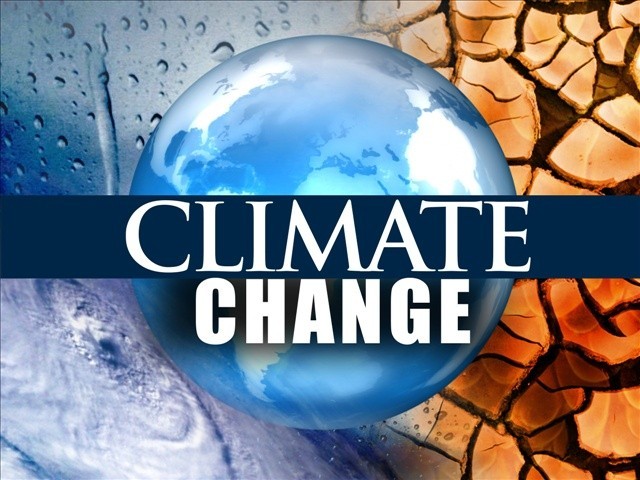BERLIN (AP) -- The U.N.'s expert panel on climate change on Sunday highlighted the disconnect between international goals to fight global warming and what is being done to attain them.
Emissions of carbon dioxide and other greenhouse gases must drop by 40-70 percent by 2050 to keep the global temperature rise below the 2-degree C (3.6-degree F) cap set in U.N. climate talks, the Intergovernmental Panel on Climate Change said.
The opposite is happening now. On average global emissions rose by 2.2 percent - or 1 gigaton - a year between 2000 and 2010, outpacing growth in previous decades to reach "unprecedented levels" despite some efforts to contain them, the IPCC said.
"There is a clear message from science: To avoid dangerous interference with the climate system, we need to move away from business as usual," said Ottmar Edenhofer, one of three co-chairs of the IPCC working group looking at ways to fight climate change.
The panel didn't get into who should do what in the 33-page summary meant to serve as a scientific guide to governments negotiating a new climate agreement, which is supposed to be adopted next year.
Leaked drafts of that document showed the biggest reason for the rising emissions is the higher energy needs resulting from population growth and expanding economies in the developing world, mainly in China and other large countries. However, diagrams that illustrated that were deleted by governments in the final version that was adopted at a weeklong IPCC session in Berlin.
"The problem for the governments was that they felt that these different perspectives can cause harm for them because they can be made at different scales responsible for the emissions," Edenhofer told The Associated Press.
The graphics divided the world into four categories - low, lower-middle, upper-middle and high income countries. Participants in the closed-door session said many developing countries objected to using such income categories.
In U.N. climate negotiations only two categories are used - developed and developing countries. The former want to scrap that firewall, saying China and other fast-growing economies can't be compared to the least developed nations and must face stricter emissions cuts, while most developing countries want to keep it. It's a major sticking point in the U.N. talks, and it spilled over into the IPCC session, participants said.
Diego Pacheco, the head of Bolivia's delegation in Berlin, said developing countries worried that graphs with four income groups in the authoritative IPCC document would open the door for industrialized countries - whom they see as historically responsible for climate change - to reframe the discussion on how to share the burden of climate action.
"This is the first step for developed countries of avoiding responsibilities and saying all countries have to assume the responsibility for climate change," he told the AP.
Counting all emissions since the industrialized revolution in the 18th century, the U.S. is the top carbon polluter. China's current emissions are greater than those of the U.S. and rising quickly. China's historical emissions are expected to overtake those of the U.S. in the next decade.
There is plenty of material analyzing emissions from those and other perspectives in a larger scientific report that the IPCC will release this week, but it was kept out of the summary for policy-makers.
Oswaldo Lucon, a Brazilian scientist involved in the report, regretted that the diagrams were taken out, saying they are relevant to the "big picture." He said China, India, Brazil and Saudi Arabia were among the countries opposing using them in the summary.
Underlying the arguments "was a whole history of discussions on who was going to foot the bill of environmental damage," Lucon said.
Another IPCC report, released last month, warned that flooding, droughts and other climate impacts could have devastating effects on economies, agriculture and human health, particularly in developing countries.
Global temperatures have already risen about 0.8 C since record-keeping started in the 19th century. The IPCC said the goal of keeping the warming below 2 C by 2100 would require a significant shift in the energy system, away from oil and coal, which generate the highest emissions. That would mean a near-quadrupling of energy from zero- or low-carbon sources such as solar and wind power.
U.S. Secretary of State John Kerry called it a global economic opportunity.
"So many of the technologies that will help us fight climate change are far cheaper, more readily available, and better performing than they were when the last IPCC assessment was released less than a decade ago," Kerry said Sunday.
Turning to the costs of that transition, IPCC projected that it would reduce consumption growth only by about 0.06 percentage points per year, adding that that didn't take into account the economic benefits of reduced climate change.
"The cost is not something that's going to bring about a major disruption of economic systems. It's well within our reach," IPCC chief Rajendra Pachauri told AP. Delaying climate action would make it more costly, he added.
Current pledges by governments in U.N. climate talks to reduce or curb emissions by 2020 are setting the world on a path of 3 degrees C (5.4 F) of warming, the IPCC said. U.N. climate chief Christiana Figueres, who is leading those talks, urged countries to raise their collective ambition.
"The only safe path forward is to arrive at a carbon neutral world in the second half of this century," Figueres said.
To meet the 2-degree target the world may have deploy new technologies to suck CO2 out of the air, the IPCC said. The most advanced right now is so-called bioenergy with carbon capture and storage. That means growing crops that absorb CO2, then burning them for energy, while capturing the CO2 emissions. The CO2 is then stored deep underground, resulting in a net removal of CO2 from the atmosphere.
"We have the technologies," said U.S. scientist Leon Clark, one of the authors of the report. "But we really have no sense of what it would take to deploy them at scale."
Thursday
April 25th, 2024
9:06PM









